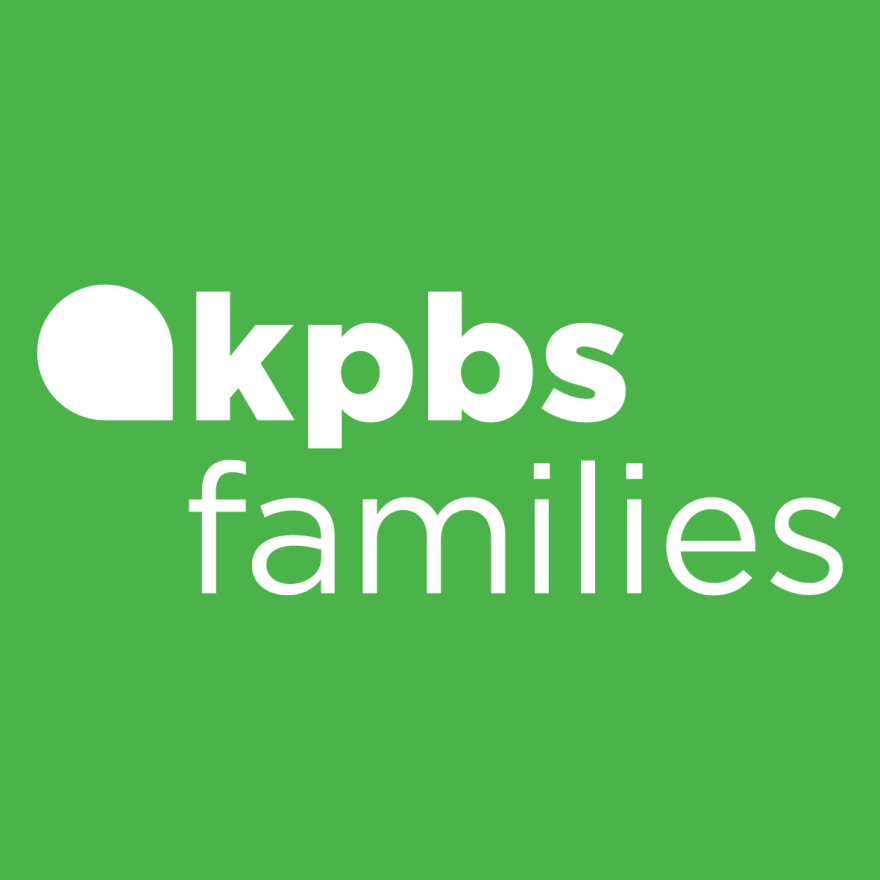Concerns over the impact of social media on the mental wellbeing of children of all ages has led to a push to change how these platforms work, and the rules around how kids use them.
California took action to increase safety for young people on social media by banning the use of algorithms on child accounts without parental approval and labelling them “addictive feeds.”
Though the law will not take full effect until 2027, it has the potential to transform how social media works for children. Proposed legislation at the federal level and in other states is taking similar approaches to limiting social media’s reach to kids.
Outside of the United States, Australia recently passed among the most stringent social media laws in the world, barring children under the age of 16 from social media altogether.
While the ultimate outcome of many of these efforts remains to be seen, they make clear that social media in its current form is not working for families and change is needed.
“The most common question parents ask me is, ‘Is social media safe for my kids?’" said Surgeon General Dr. Vivek Murthy in an advisory he issued last year. “The answer is that we don’t have enough evidence to say it’s safe, and in fact, there is growing evidence that social media use is associated with harm to young people’s mental health.”
While many welcomed Murthy’s advisory, others say the pendulum has swung too far from a lack of concern to leaders being overly concerned. But there is no disputing that social media platforms play a big role in the life of adolescents and that parents need to have some measure of control on how, when and where their children are on social media.
With all this in mind, the following is a rundown of the most common social media platforms and some of the parental controls and settings they offer.
YouTube
Regardless of whether you characterize it as social media or something more, YouTube has become the dominant tech platform for young people. According to Pew Research, 95% of teenagers in the U.S. have used YouTube. And to think it all started with a video filmed in San Diego back in 2005.
The video sharing site soon grew to become the top destination for watching videos on the internet. Chances are, your kids are more familiar with YouTube than national big three television networks NBC, ABC or CBS. On average, a child watches over 100 minutes of YouTube, and its cousin YouTube Kids, daily, according to Precise TV.
So, what do parents need to know about YouTube and their kids?
There are two main ways to set up your child on YouTube:
- "YouTube Kids," which is a simplified, more limited version of YouTube meant for children from 4 to 12 years of age
- A “parent-supervised” account, which is a YouTube child account managed by a parent or guardian
To start, you’ll need to have a Google account of your own and also create one for your child.
To set up your child with YouTube Kids:
- Open the "Google Family Link" app.
- Select which child profile you want to update.
- Select "Controls" > "Content Restrictions."
- Choose YouTube.
- If you have not set up your child’s account yet on YouTube, it will ask you to choose between "YouTube Kids" or a parent-supervised YouTube account. Choose YouTube Kids.
- Select a default content setting: "Preschool" (ages 4 and under), "Younger" (ages 5-8), or "Older" (ages 9-12)
- Next, choose whether you want to allow your child the ability to search YouTube Kids. (Note: YouTube Kids is a more limited, age-gated experience so many videos on the main YouTube are not available on YouTube Kids.)
Another available setting is a timer that will shut off viewing once it is reached. Parents can also review what their child is watching.
To set up a parent-supervised YouTube child account:
- Open the Google Family Link app.
- Select which child profile you want to update.
- Select Controls > Content Restrictions.
- Choose YouTube.
- If you have not set up your child’s account yet on YouTube, it will ask you to choose between YouTube Kids or a parent-supervised YouTube account. Choose YouTube and YouTube Music (parent supervised).
- Select a default content setting: "Explore" (suggested for ages 9 and older), "Explore More" (suggested for teenagers), "Most of YouTube" (almost all content on YouTube).
Other parental settings
In addition to being able to select general content settings, parents also have control over the functionality of YouTube.
Under parent settings, parents can choose to disable "autoplay." Autoplay allows another video to automatically start once the previous video finishes, making it easier to continue viewing without any clicks or taps. Disabling autoplay removes some of the ease of use to watch more content.
NOTE: This autoplay setting does not change autoplay on YouTube Shorts.
Parents can also limit some of the information on YouTube by pausing watch history and search history. Specific YouTube channels and videos can also be blocked for the child account.
To restrict content on YouTube:
1. Go to Family Link > go to the child’s profile you want to make changes to > Go to Controls > Content Restrictions > YouTube.
2. Disable autoplay.
3. Pause "Watch History."
4. Pause "Search History."
5. Clear History
6. Unblock videos
For YouTube break and bedtime reminders, go to Settings > General.
For more resources, visit YouTube's specific family options.
Snapchat
Known for its creative camera filters and easy-to-share messaging features, Snapchat remains one of the top social networks for young people today. The self-described “camera” company is known for its disappearing messages, allowing its users to select how many seconds a message can be viewed.
The nature of the platform has contributed to advocates raising concerns over the safety of younger users. Snap, the parent company of Snapchat, also is facing a lawsuit arguing the platform’s design contributed to the deaths of young people who purchased drugs and other illicit material through the platform.
Snapchat remains a popular way for teenagers to connect online and bridge to the online world. Parents have the ability to adjust options and what level of connectivity and sharing their children have on Snapchat through its "Family Center."
To access parental settings on Snapchat:
- Create a Snapchat account.
- Go to Settings > Family Center.
- Invite your child to join Family Center. (Note: You must be friends with your child to invite them.)
- Once your teen accepts, parents will be able to see who their friends, who they have messaged in the past week, but not the actual messages themselves.
- Parents can also turn on the “Restrict Sensitive Content” setting from the Family Center.
One popular feature in Snapchat is "Snap Maps," which allows you to see where your friends are and have been. It can be a useful tool to bride the digital and physical social world, but parents may want to prevent young people from revealing too much of their real world comings and goings. For that, there is "Ghost Mode," which eliminates sharing of your child’s location on Snapchat.
To turn off location sharing in Snap Maps, go to Settings and enable Ghost Mode.
Learn more at Snapchat's Family Center.
TikTok
When it was released in the U.S. in 2018, the social network TikTok changed the face of online video online, ushering in a new era of of short, fun, music-driven videos meant to be to be shared and remixed. It is now the second most popular social network for U.S. teens.
Despite its popularity, the future of the platform is in doubt, at least in the United States. The platform is facing ongoing uncertainty of a nationwide ban due to national security concerns over its Chinese owner, Bytedance.
Unless a ban does indeed take hold, millions will continue to watch, scroll, dance and create on one of the world’s most vibrant social networks.
Like other social networks, TikTok has added protections for young peoples accounts, as concerns over mental health harms and harmful content exposure increased in recent years.
How to set up parental controls on TikTok:
- Go the menu in upper right hand of screen.
- Select Settings and privacy.
- Select "Family Pairing."
- You can link our account to your teen by QR code or by sending them an invite.
- Your child will need to accept the request.
- Once accepted, parents have the option to set screen time limits, reminders to take breaks and get updates on usage.
Once Family Pairing is set up, go to Settings and privacy > "Screen time" to set Screen time rules for your child.
Content preferences
TikTok also offers a more robust setting to limit inappropriate content called "Restricted Mode." This setting is meant to limit mature content, as well as removes many of the platform’s “live” features, as well as visibility of who the account follows.
To enable or disable Restricted Mode:
- Go to Settings and privacy.
- Select "Content preferences."
- Select Restricted Mode.
TikTok also provides a few different modes to choose from:
Privacy
You can add levels of privacy to your teen’s accounts in the privacy settings which can be found by under Settings and Privacy > Privacy.
Parents can make the account private and other limitations to sharing activity status and other account details.
Comment care mode
This mode is meant to combat online bullying on TikTok by using more strict filtering of comments. This can be set by going to:
- Settings and privacy > Privacy > Comments
- Select "Comment care mode."
For more, visit TikTok's Guardian's Guide.
Instagram has come a long way from its infancy of food shots and photo filtering. It’s hugely popular among a wide range of age groups, with young people in particular using the platform to share and connect with their friends.
Instagram, which is owned by Facebook’s parent company Meta, uses a feature called "Family Center" for parents to manage teen accounts.
To enable Family Center from Instagram:
- Go to Settings and activity
- Select Family Center under For Families
- Select Supervision
- Send invite to your teen
From a teen account, you can connect with a parent account and view more settings by going to "Teen safety settings."
To enable Teen safety settings on Instagram:
- Go to Settings and Activity
- Select Teen safety settings
Once accepted, parents have access to set screen time limits, can add break reminders, and get insights into their teen’s Instagram usage.
In the fall of 2024, Meta announced new rules for "Teen Accounts" on Instagram. Teen accounts now default to being private by default and require parental approval to be changed to being public.
The new rules provide overall stricter content rules by default, as well as protections to limit time spent on the app and exposure to online harms while on it.
Teen accounts on Instagram also have stricter rules to who they can send and receive messages from along with stricter content filter settings. Notifications are also muted for teen accounts between the hours of 10 p.m. and 7a.m.
To review account privacy settings, go to Settings > Account privacy > Select between Private or Public.
Parents can continue to manage and update their child’s Instagram account by going to Settings > Supervision.
For more, visit Instagram's Parental Guide.
Discord
Discord is a popular way for people to connect based on their interests. It started as a way for gamers to chat while playing online video games, but has grown to include countless other shared interests. People can connect with each other in specific “servers,” which may sound technical but really just means a community space. People can chat using text, voice, even video.
Like many social platforms, Discord manages parental controls through what it calls "Family Center." Parents will need to create their own account and then connect with their child’s account.
Connect with your child's Discord account
- From your account using the Discord mobile app, go to settings (gear icon) and select Family Center.
- Select "Connect with Teen."
- From teen’s account go to Settings > Family Center.
- Select "Connect with Parent."
- On parent’s account, scan teen’s QR code.
- Once connected, you can learn more about how your teen is using Discord by going to Settings > Family Center > Activity.
Note: Parents can only see certain aspects of their child’s activity such as what servers they join, new friends they have made, and who they have messaged. Parents are not able to see the actual messages in Discord.
In addition to Discord’s Family Center, there are other options that parents may want to review with their teen. They include:
Privacy and safety
Discord’s privacy and safety settings are found by going to Settings > Privacy & Safety.
Here parents can review default settings for how the app will handle sensitive content, with options to blur or block it.
You can add spam filtering for direct messages (DMs). Here's the following options:
- Do not filter direct messages
- Filter direct messages from non-friends (default)
- Do not filter direct messages
You can also choose whether to allow direct messages from non-friends who are a part of a server you or your teen are using, as well as to allow message requests from server members you don’t know.
Friend requests
This is a pretty common setting in social media platforms and allows you to choose who can send a friend request to the account.
To accept a friend on Discord:
- Go to Settings > Friend Requests
- Select whether to allow friend requests from Everyone, friends of friends, and/or server members.
For more resources, visit Discord's Family Center.
Facebook’s Messenger Kids
Messenger Kids is Facebook’s kid-centric messaging app designed to give parents control over their children’s experience on the platform. Like parental controls on many other platforms, the starting point for getting a child on Messenger Kids is for the parent to have a Facebook account set up already.
To create a Messenger Kids account:
- Install Messenger Kids app on your child’s device.
- Sign in with parent account first.
- Select "Add another account."
- Enter your child’s name and birthdate.
- You can add messenger kids accounts already tied to your Facebook account or to other contacts you have.
- Choose whether or not to allow your child to choose friends. Parents can still manage friends for their child’s account regardless of what selection is made.
- Allow your child to connect with other kids using a code. This is a popular way kids to connect with friends.
- Once the code is created, parents can share the code with other parents.
It’s important to note that creating a Messenger Kids account for your child is not the same as creating a Facebook account. It allows your child to chat and communicate with only people approved by their parents. Also, parents are given much greater insight into what their child is doing in the app compared to platforms for older children. Still, there are settings that parents can adjust in Messenger Kids.
Parents can find the parent dashboard to manage their child’s Messenger Kids account via their Facebook account.
To find parental controls on Messenger Kids:
- Log in to Facebook on browser or in app.
- Go to "Menu" and scroll down to "More from Meta."
- Select Messenger Kids.
There are also privacy controls that can be updated in Messenger Kids app directly, though they are more limited and accessible to the child.
To access privacy controls in Messenger Kids:
- Select "Profile picture."
- Go to "Privacy & safety."
- Select "Friends list visibility" and choose from "Your contacts" or "Only you and your parents."
- Just below, you can also see any friends who have been blocked.
For more information, check out more parent resources for Messenger Kids.









